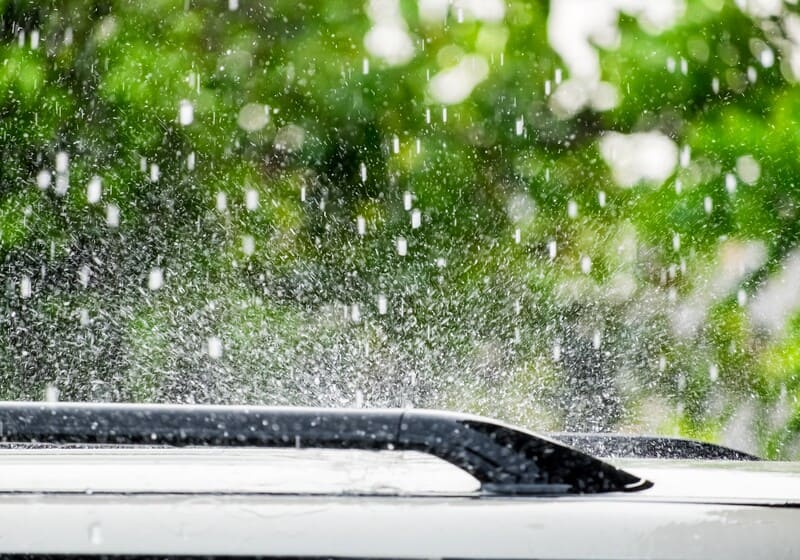Chances are, you already know if you live in Hail Alley. This stretch of the U.S. extends from Texas to the Dakotas, covering wide swaths of Oklahoma, Kansas, Colorado, Wyoming, Missouri and Nebraska. Hail storms in these areas can be strong and sudden, with the height of hail season occurring every year around June.
During a hailstorm, hailstones will drop from 30,000 feet and reach speeds of up to 120 miles per hour before they hit the ground, your car, your house or anything else. While most hail is pea- to marble-sized (1⁄4 inch to 1⁄2 inch in diameter) large storms can produce large hail—in fact, the largest hailstone ever recorded in the U.S. fell in Vivian, SD with a diameter of 8 inches!
When these storms come through your area, sometimes the damage left behind is very apparent. A lot of the time it’s not, though, and you need a weather eye (sorry, couldn’t help it) to spot potentially serious damage. Here’s a rundown of places around your house to check for hail damage.
Signs of Hail Damage on the Roof
Your roof will take the brunt of the damage during a hailstorm, and there are some easy ways to tell if yours has been affected:
Signs of Hail Damage Inside the House
If you’re not quite ready to look around on the roof yet, there are some common things to check for inside your house that may indicate hail damage:
Call National Property Inspections today.
Find your local inspector today to schedule a full inspection of your home. NPI inspectors have the training, knowledge and expertise to document the condition of all your home’s major systems.



